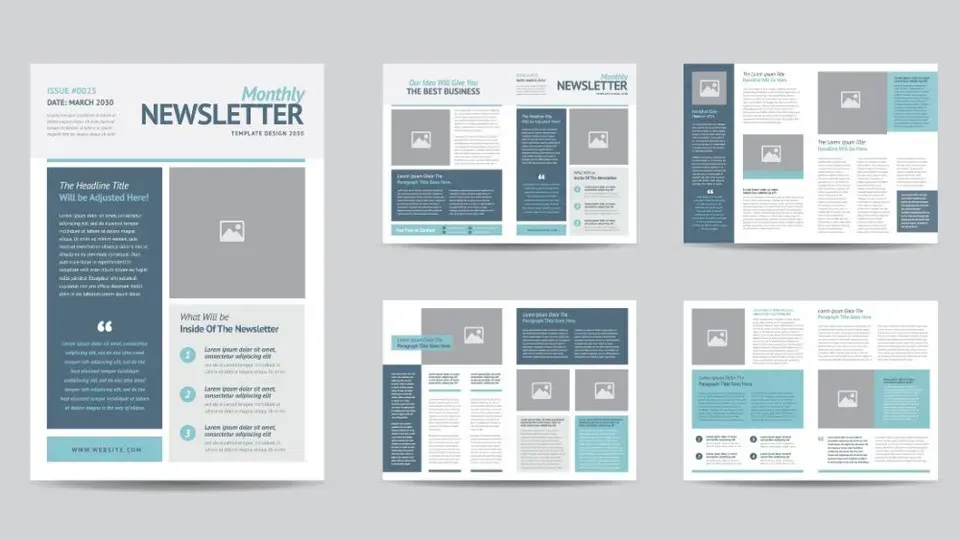
You need to design effective emails for newsletters and marketing campaigns to engage your audience and achieve your communication goals. In today’s competitive digital landscape, a well-crafted email can significantly boost open rates, click-through rates, and conversions. However, this task can be quite challenging. You have to create visually appealing and responsive emails that look great across various devices.
Fortunately, a wide array of email design tools has emerged to simplify this process. These platforms offer intuitive drag-and-drop interfaces, pre-designed templates, and advanced features that empower marketers, businesses, and individuals to create professional-grade emails without needing to write a single line of code. So, here are some of the best email design tools for you to explore when making your newsletters and campaigns.
Mailchimp
Mailchimp is a user-friendly drag-and-drop email builder with a vast library of responsive templates, So, it makes it accessible for beginners to create visually appealing newsletters and campaigns. Its strength lies in its automation mechanisms, along with its responsiveness to audience behavior. However, when it comes to design, it can often fall short. The templates cannot be changed up too much, forcing those with specific branding requirements to resort to custom HTML coding.
Furthermore, Mailchimp’s core focus on email marketing means its design tools, while competent, don’t offer the granular control or creative freedom found in dedicated graphic design software. The platform’s navigation can also be clunky, making it challenging to locate specific design features or manage assets efficiently. Even the process of uploading and optimizing images has specific size recommendations that, if not adhered to, can lead to display issues across various email clients, adding an extra layer of complexity. Finally, the pricing model, especially as contact lists grow, can quickly become expensive, making it a less cost-effective option for businesses scaling their email efforts, despite the initial appeal of its free plan.
Brevo
Brevo boasts a clean user interface and offers a solid drag-and-drop editor with a decent selection of free newsletter templates. It also has some good AI integrations for content creation, contact enrichment, and live chat. However, its email design capabilities can feel somewhat limited for those seeking high-end customization. The template library, while functional, isn’t as extensive or as creatively diverse as some competitors. So, achieving a truly unique, on-brand look often requires resorting to custom HTML. This can be limiting as Brevo’s support for complex or custom HTML isn’t always seamless, leading to rendering inconsistencies across various email clients and potentially frustrating design workflows.
In addition, while Brevo’s pricing model is generally based on emails sent rather than contacts, certain advanced design features or the removal of Brevo branding might be locked behind higher-tier plans or require additional add-ons. This increases the overall cost for businesses that need more control over their email aesthetics. This can make it a less ideal choice for designers or marketers who want creative freedom and consistency.
MailerLite
MailerLite is praised for its user-friendly interface and customer support. Its drag-and-drop editor makes it approachable for beginners, along with its array of customizable templates. So, its design functionalities can quickly hit a ceiling for those needing more advanced customization. The selection of pre-designed templates, while functional, isn’t always the most cutting-edge or diverse, and achieving truly unique branding can be challenging without delving into custom HTML. Unfortunately, the full power of the custom HTML editor is typically reserved for higher-tier paid plans.
Moreover, features like detailed design testing across various email clients and spam testing are not always readily available or as robust as in some competitors, potentially leading to design issues going unnoticed until after a campaign is sent. While its free plan is generous for basic needs, access to more professional templates and crucial design-centric features often requires an upgrade, which can become costly as your subscriber list grows, making it less ideal for businesses with evolving or sophisticated design requirements.
Omnisend
While Omnisend is a robust e-commerce marketing automation platform, its email design capabilities can sometimes feel like a secondary consideration. The drag-and-drop editor, while functional, might not offer the same level of creative flexibility or extensive template variety found in tools more singularly focused on email design. Users aiming for highly unique or bespoke email layouts may find themselves constrained by the available blocks and styling options, often necessitating the use of custom HTML. However, working with custom HTML in Omnisend isn’t always seamless, and rendering issues across various email clients can be a recurring headache, requiring significant testing and adjustments.
Furthermore, while Omnisend excels in integrating with e-commerce platforms and automating workflows, the design process itself can occasionally feel less intuitive or more cumbersome, especially when compared to platforms lauded for their pure design prowess. The focus tends to be more on getting emails out with products rather than offering unlimited design freedom. Although the free plan provides access to many features, the full suite of advanced design tools and priority support are, understandably, reserved for higher-tier paid plans, which can become quite costly for larger contact lists.
PosterMyWall
PosterMyWall stands out as an excellent choice for email design, particularly for users who prioritize visual impact and ease of use without extensive graphic design experience. Its primary strength lies in its intuitive drag-and-drop editor, which allows for quick and seamless creation of visually rich email content. With a vast library of professionally designed templates, covering a wide range of industries and occasions, users can easily find a starting point and customize it to their brand. The platform excels in incorporating multimedia elements, enabling users to effortlessly add high-quality images, videos, and even animated elements, making emails more engaging and dynamic.
In addition, PosterMyWall offers a built-in email marketing platform, allowing users to design, send, and track campaigns all from one place, eliminating the need for separate tools. The responsive HTML templates ensure that designs look fantastic across all devices, a critical factor for modern email marketing. It also has AI integrations for generating images and an AI writer for captions to use with your email campaigns.So, for most small businesses and individuals, PosterMyWall provides an incredibly efficient and effective way to produce stunning and impactful email newsletters and campaigns.
Choosing the best email design tool ultimately depends on your specific needs, skill level, and budget. Regardless of your choice, a strong email design tool empowers you to create engaging, brand-consistent newsletters and campaigns that resonate with your audience and drive your marketing objectives.
